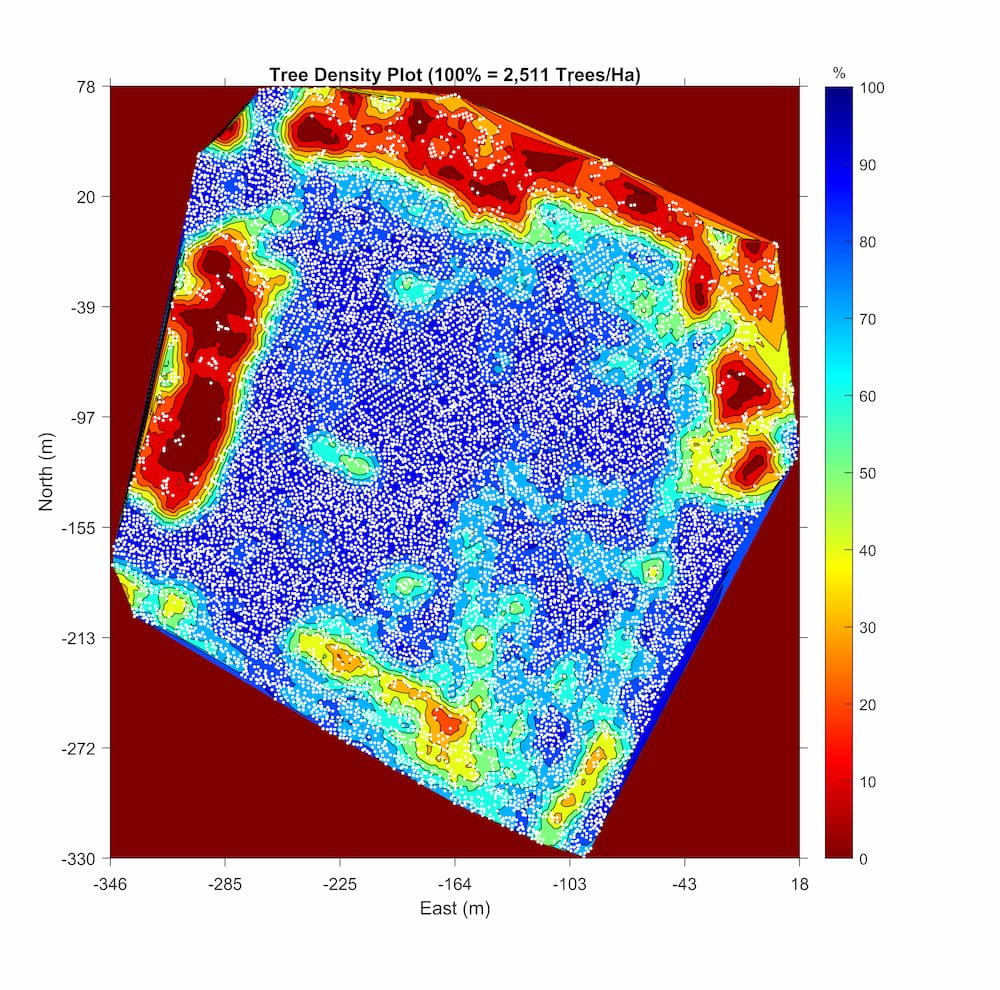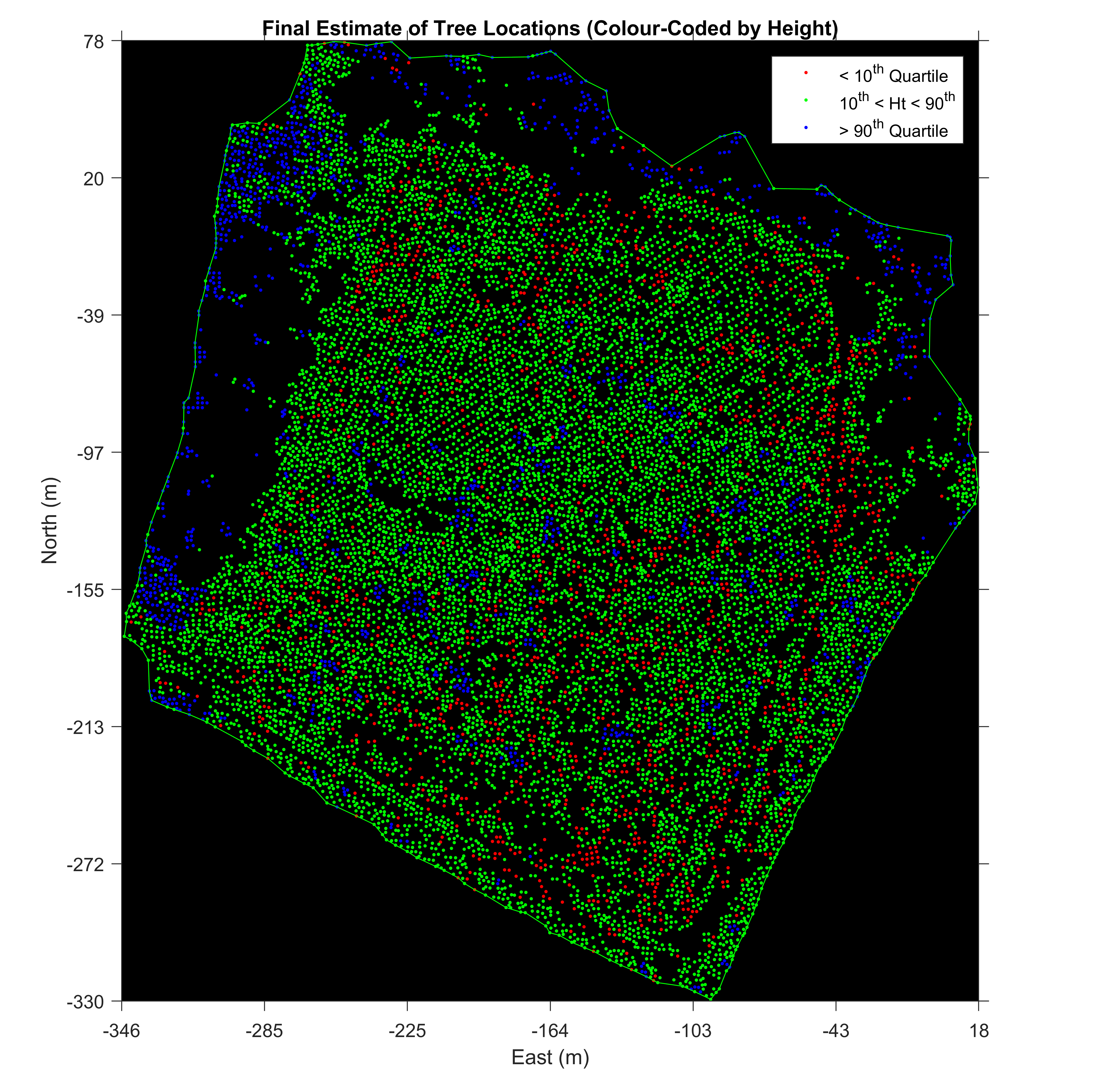Operational Transition of PINT Software
Lead Researchers: Professor Anthony Finn, Dr Stefan Peters, Dr Jim O'Hehir
The Project
This project aims to transition the software known as PINT (Program for Identifying Nursery Trees) into operational use within forestry companies and service providers. A rolling program of outreach consisting of one-on-one engagement, workshops and seminars will be conducted to assist in the necessary knowledge transfer and integration of PINT into forestry management systems. A short experimental field trial program, tailored to the needs of participants, will also be conducted to devise drone flight strategies that allow the optimal operational outcomes; and the PINT software will be modified to ensure it delivers the most operationally useful outputs for its users.
The goal of the project is to create an opportunity for integrating the software known as PINT into stakeholder operations, by transferring the requisite background and foreground knowledge to users, who are not expert in PINT’s design or operation, mathematical techniques, or manipulation of information. This will be achieved through a series of one-on-one engagements and workshops. Crucially, these workshops will also be used to identify operational improvements that can be made to the PINT software to provide stakeholders with additional PINT output and functionality that they require for their commercial operations
Industry Partners
The University of South Australia will collaborate with the following industry partners: HQ Plantations, HV Plantations, Tiberlands Pacific, Wespine Industries.
Our Research Methods
PINT performs well in terms of high TPR, low FPR, and individual tree location accuracy for radiata and Caribbean pine and has thus been used experimentally by several companies. However, the software was developed within a research framework and its current displays, user interface, and software distribution and installation process have not benefitted from detailed interactions between the developers and potential users.
The aim of this short project is therefore to reach out to companies that have shown interest in PINT, and, through one-on-one engagements, to transition key knowledge to users so they can maximise the opportunity for its integration into their own commercial forestry operations, solicit feedback on possible software improvements, and instantiate these recommendations so that PINT can be modified to deliver maximal operational benefit. PINT will also be modified to detect and locate newly planted seedlings within eucalypt plantations.
In addition to the one-on-one engagements, two workshops will be held. At the first, potential users of PINT will receive dedicated training in use of the software. They will be trained on data previously acquired by UniSA that closely matches their own requirements or, if they prefer, can bring their own data to process it using PINT with the developers on hand to offer bespoke support. This workshop will also provide the opportunity for users to offer feedback on the current version of PINT so that developers can better understand user needs and thus tailor the software to operational requirements. For instance, user interfaces, output displays, distribution schemas, and algorithmic settings can all readily be modified to suit particular needs, site and tree properties, and commercial operations.


Potential Impacts
In addition to providing a basis for greater efficiencies and cost reductions, this project will also create the opportunity for transitioning the PINT software into stakeholder operations, including tailoring it to the identified needs of these companies.
The key measure of impact and benefit of this project would include an increase in the effective stocking of plantations, i.e. a reduction in tree loss in the first year after planting represented by a reduced need for plantations refilling and replanting.
Project Outputs
Workshops and one-on-one engagements will be used as the primary device to ensure effective knowledge transfer to industry, although milestone reports, selected journal articles, seminars, and conference presentations will also be produced from the research described in this project. In addition, an enhanced version of the PINT software with improved output functionality tailored to the operational needs of stakeholders will also be delivered.
Where appropriate, software will be provided to all participating companies, noting that the aim is not to deliver commercial software but rather make available operationally useful technology to all participants that is affordable, with efficient data flow processes that can provide outputs suitable for integrating into existing software systems.
A report detailing the performance of the enhanced software and guidelines on its installation and use will also be delivered.


